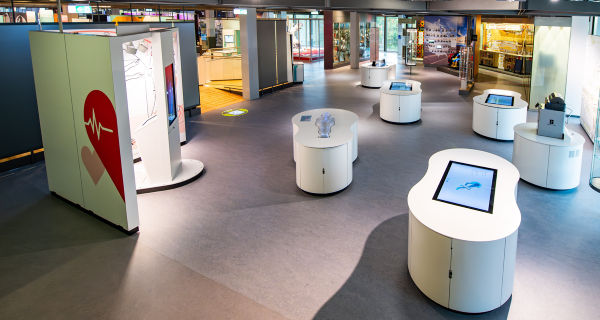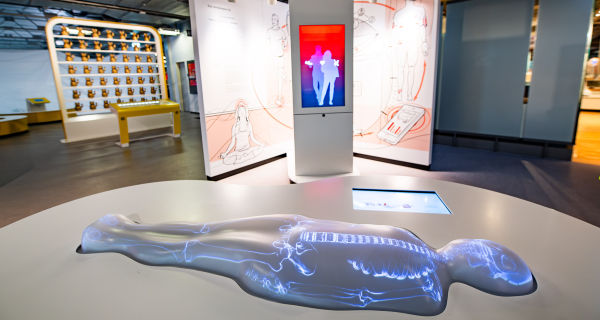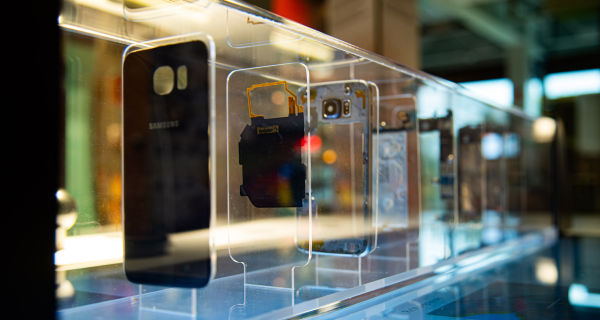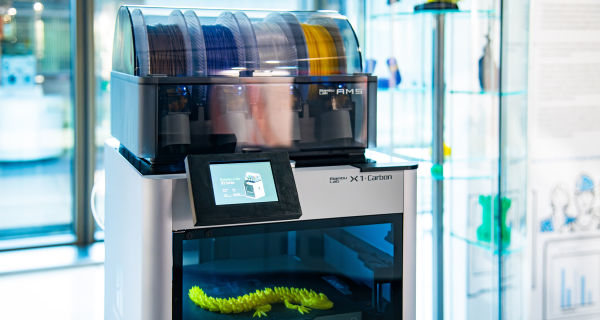Since the start of the 21st century, digital networking has extended to all areas of society, boosted by the increasing power and affordability and decreasing size of processors, sensors and actuators, as well as by high data rates. Many everyday objects contain sensors and tiny chips (MEMS) capable of capturing data and enabling smartphones, household devices, fitness trackers, vehicles and the like to communicate with one another and with people alike. This is known as the “Internet of Things”. However, the increasing acquisition of data has also heightened the risk of constant monitoring and data abuse.
The exhibition area shows clearly, by means of interactive exhibits, how sensor technology is applied in the fields of networked mobility, the working world of tomorrow, communications and entertainment, and self-measurement.
On the go and on the spot
In the IT-based cities of the future, sensors in the surrounding area and in vehicles will ensure that data can be exchanged between people, technology and the environment on an ongoing basis. Visitors can test the technical sensors in vehicles in the course of a car race and use smart traffic lights, street lamps and buildings to help solve various problems related to urban life in the simulation of a networked city at the interactive stations in this part of the exhibition.
The measured individual
Pulse rate, blood oxygen level, steps taken - self-tracking is used to analyse our body in real time with the help of sensors. Visitors to the museum can have their vital parameters measured in a measurement booth and take a look at the “transparent man” to see the type of data that can already be captured by modern tracking devices ranging from contact lenses for diabetics to the “intelligent” t-shirt.
Digital world of work
The most notable feature of the networked factory of the future is the intelligent and flexible cooperation between man and machine. Machines and workpieces contain software and electronics that allow them to communicate with one another. Visitors can control an interactive factory of the future at one of the interactive monitors: they can witness networked production workflows and are invited to become designers and model a 3D object themselves.
Three-dimensional
Meanwhile, next door a further future technology is going about its work independently: A 3D printer is busy producing three-dimensional figures, components and other individual forms.



